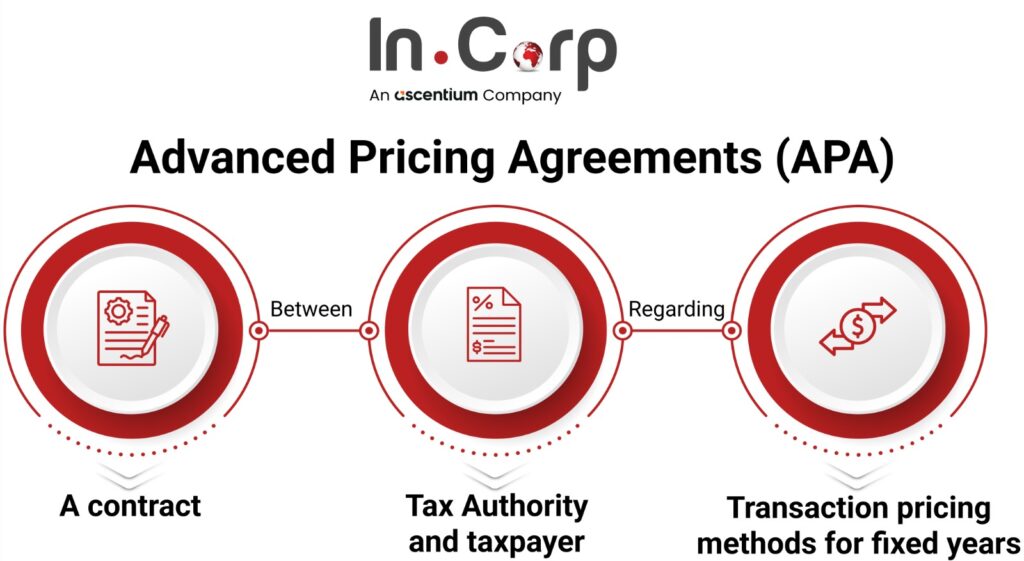Transfer pricing refers to the pricing of transactions between related companies. It is crucial for compliance with tax regulations. This guide will help you understand the essentials of transfer pricing in Vietnam, covering rules, methods, documentation, and audit readiness.
What Is Transfer Pricing?
The landscape of transfer pricing in Vietnam has become increasingly challenging for businesses. With the Vietnamese authorities conducting 55,840 inspections in the first ten months of 2022—a stark 40% increase from the previous year—the pressure on enterprises to comply with transfer pricing regulations has intensified. The financial impact of these inspections has been substantial, leading to the collection of an additional USD 4,85,396 in tax revenue.
Moreover, the number of inspections focused specifically on enterprises with related party transactions more than doubled in the first nine months of 2022 compared to 2021, reaching 597 inspections. This increase underscores the necessity for businesses to grasp and adhere to transfer pricing rules, thereby avoiding significant penalties and financial challenges.
Looking for Tax Consultant Outsourcing in Vietnam? Check out InCorp Vietnam’s Third-party Audit & Tax Advisory Services
Importance Of Transfer Pricing
Transfer pricing involves determining the rules and methods used for pricing transactions. This applies to both enterprises that are under common ownership or control. It plays a crucial role in ensuring that transactions between related parties are conducted at fair market values, preventing profit shifting and tax avoidance.
In Vietnam, taxpayers, including branches of foreign companies, are required to comply with the transfer pricing rules, which align with OECD guidelines following the issuance of Decree 132. The transfer price is essential in this context.
The Vietnamese tax authorities have the power to adjust prices for transfers of tangible or intangible property, services, and loans in cross-border intragroup transactions to reflect market values. This means that businesses must be diligent in preparing transfer pricing documentation to substantiate their pricing strategies and methodologies. Failure to comply with Vietnam transfer pricing rules can result in significant tax adjustments and penalties.
Definition of Related Parties
Related parties are defined based on specific criteria outlined in Vietnamese regulations. To be considered a related party in Vietnam, entities must have a minimum ownership stake of 25%. This definition extends to more specific cases, as detailed in Clause 2, Article 5 of Decree 132/2020/ND-CP.
Understanding the definition and criteria for related parties is crucial for compliance with transfer pricing regulations to avoid penalties. Domestic-related party transactions must be carefully documented and reported to ensure that they meet the arm’s length standard and reflect fair market values.
Arm’s Length Principle
The arm’s length principle is a cornerstone of transfer pricing, ensuring that intercompany transactions reflect market value. This principle dictates that transactions between related parties should be conducted under the same conditions as those between unrelated entities in similar circumstances.
Following the arm’s length principle ensures that businesses comply with transfer pricing regulations and avoid tax authority adjustments. Determining arm’s length pricing involves comparing intercompany transactions to those in the external market, ensuring that prices are fair and reflective of market conditions.
Read Related: Vietnam Business Accounting & Taxation: Principles of Taxation, Problems & Solutions, and Accounting Department Setup
Transfer Pricing Methods
Transfer pricing methods are essential tools for determining arm’s length pricing in intercompany transactions. In Vietnam, the recognized transfer pricing method includes the comparable uncontrolled price (CUP), resale price, cost plus, profit split, and transactional net margin methods. Each method has unique applications and is aligned with OECD guidelines to ensure compliance with international standards.
Entities classified as related parties are required to keep documentation. This documentation must support their chosen methodology for arm’s length pricing. Correctly understanding and applying these methods allows businesses to substantiate their transfer prices and avoid audit adjustments.

Comparable Uncontrolled Price Method
The comparable uncontrolled price (CUP) method is a transactional method that determines the arm’s-length price based on prices from comparable transactions. Local comparables are often preferred as they better reflect market price conditions relevant to the transaction.
However, sourcing local comparables can be challenging due to the limited availability of similar transactions in the market.
Resale Price Method
The resale price method adjusts the price charged to independent buyers by deducting an appropriate gross margin. This method focuses on the sales revenue generated from the resale of goods or services, ensuring that the prices charged reflect market value and marginal revenue.
Cost Plus Method
The Cost Plus Method is a transfer pricing strategy that adds a markup to the production costs to determine transfer prices. By adding a markup to the total costs of production, this method aims to ensure that transfer prices reflect the marginal costs and the value added by the seller.
Profit Split Method
The profit split method is a transfer pricing approach that divides profits between related parties based on their respective contributions. This method is particularly useful for transactions involving intangible assets or unique contributions that are difficult to value individually.
Transactional Net Margin Method
The transactional net margin method (TNMM) evaluates net profitability by comparing it to the results of similar enterprises engaged in comparable activities. Utilizing multiple years of data can enhance the reliability of this method, ensuring accurate benchmarking and compliance with transfer pricing regulations.
Transfer Pricing Documentation
Effective transfer pricing documentation is crucial for demonstrating compliance with tax regulations and mitigating risks in cross-border transactions. Taxpayers are required to retain contemporaneous records that are created when related-party transactions occur. Clear documentation is essential for responding to audit requests and substantiating transfer pricing methods.
Thorough and accurate transfer pricing documentation ensures businesses comply with local regulations and avoid audit adjustments and penalties.
Annual Transfer Pricing Declaration
Companies must file annual disclosure forms that detail arm’s length values and related party transactions along with their tax returns. Complete transfer pricing studies are required in advance of filing tax returns for transactions that exceed a certain amount. Documentation must be prepared before the time of annual CIT finalization to comply with local regulations.
Preparing transfer pricing documentation before filing a tax return helps businesses avoid penalties and demonstrate compliance with transfer pricing regulations.
Contemporaneous Documentation Requirements
Contemporaneous documentation refers to documentation that existed within 30 days of filing the taxpayer’s tax return. Decree 132 introduces a three-tier documentation approach, including a Master File, a Local File, and a country-by-country report. This approach ensures that transfer pricing documentation is comprehensive and supports the chosen pricing methods.
To avoid penalties, taxpayers must maintain contemporaneous documentation and provide it within 30 days of an IRS request. This includes a best-method analysis and detailed support for pricing and methodology.
Country-by-Country Reporting
In Vietnam, the revenue threshold for an ultimate parent company to be responsible for preparing a country-by-country report is at least USD 7,14,286. If the ultimate parent company resides in Vietnam, the report must be filed with the tax authorities within 12 months from the fiscal year-end. Local filing is required if the foreign parent company is mandated to submit such reports in its jurisdiction.
Country-by-country reporting provides a comprehensive overview of the distribution of income, taxes paid, and economic activity across jurisdictions, ensuring transparency and compliance with international standards.
Read More: An Essential Guide of Taxation & Compliance Deadlines in Vietnam
Managing Transfer Pricing Audits
With the marked increase in transfer pricing audits by Vietnamese tax authorities, businesses must be well-prepared to manage these audits effectively. In the first ten months of 2022, 55,840 inspections were conducted, resulting in significant tax collections related to transfer pricing. Thorough documentation is crucial for substantiating transfer pricing methods and avoiding adjustments by tax authorities.
Companies that are in loss-making positions are likely to attract additional scrutiny during audits, making it essential to maintain accurate and comprehensive records. By understanding common areas of scrutiny and implementing effective preparation strategies, businesses can navigate transfer pricing audits successfully.
Selection of Comparables
Selecting appropriate comparables is crucial for accurate benchmarking in transfer pricing. The related party to be tested should be chosen based on the functions performed and risks assumed, focusing on the most easily compared entities.
Utilizing multiple years of data can enhance the reliability of methods like TNMM and CPM.
Audit Triggers and Focus Areas
Audit triggers can include discrepancies in intercompany pricing, significant losses reported in related party transactions, and non-compliance with contemporaneous documentation requirements. In 2022, there were 597 inspections focused on enterprises involved in related party transactions, highlighting the scrutiny by tax authorities. Tax authorities frequently examine the legitimacy of comparables and whether service charges are substantiated during transfer pricing audits.
Understanding these audit triggers and focus areas is crucial for businesses to prepare adequately and avoid potential pitfalls. Accurate documentation and compliance with transfer pricing regulations help companies mitigate audit risks and subsequent adjustments.
Responding to Audit Requests
Responding to audit requests requires a clear understanding of common areas of scrutiny and implementing effective preparation strategies. Companies must submit an annual transfer pricing declaration that accurately reflects related party transactions and supports pricing strategies. Non-compliance with transfer pricing regulations can result in significant penalties, including fines and criminal prosecution for tax evasion.
Advance Pricing Agreements (APAs)
Advance Pricing Agreements (APAs) are agreements between taxpayers and governments regarding related party prices, providing a pre-emptive approach to managing transfer pricing risks. Circular 45/2021/TT-BTC introduced new rules regarding the application and administration of advance pricing agreements, making it crucial for taxpayers to be aware of its implications. APAs can be unilateral, bilateral, or multilateral, depending on the jurisdictions involved.
Entering into an APA significantly reduces the risk of a transfer pricing audit, as tax authorities pre-approve the pricing methods. APAs provide a reliable framework for managing transfer pricing risks, ensuring compliance, and maintaining stable tax obligations.

APA Application Process
The APA application requires an initial meeting with tax authority representatives to discuss the procedure and clarify necessary information. The application should include details of the applicant, associated enterprises, the controlled transaction, agreement type, and duration.
This process ensures that both parties have a clear understanding of the terms and expectations involved.
Benefits of APAs
APAs offer numerous benefits, including reducing the risk of transfer pricing audits and enhancing predictability in tax liabilities. By confirming the acceptable pricing methods for intercompany transactions, APAs provide companies with a reliable framework for managing transfer pricing risks and maintaining compliance.
Maintaining APA Compliance
To maintain compliance, companies must adhere to the terms established in the APA and submit annual reports as required. These reports ensure that the company continues to meet the conditions outlined in the APA, providing ongoing assurance of compliance with transfer pricing regulations.
Interest Expense Cap and Thin Capitalization
Vietnam does not enforce thin capitalization rules, meaning there are no specific regulations on the ratio of debt to equity for interest deductibility. However, there are limitations on interest expense deductibility, restricting the amount of interest that companies can deduct for tax purposes. These limitations can influence corporate strategies regarding debt financing.
By understanding these limitations, businesses can better manage their tax liabilities and ensure compliance with local regulations. Proper planning and documentation are essential to navigate the complexities of interest expense deductibility.
30% EBITDA Cap on Interest Deductibility
Interest expense deductions are subject to a limitation of 30% of a company’s EBITDA. This cap applies to net interest expenses after offsetting interest income. Non-deductible interest expenses can be carried forward for five years, providing some flexibility for companies.
Implications for Debt Funding
The limitations on interest deductibility can influence corporate strategies regarding debt financing. Licensed investment capital minus charter capital determines the maximum amount of debt funding for companies in Vietnam, making it essential for businesses to carefully plan their financing strategies.
Risk Management and Penalties
Transfer pricing audits have become more prevalent and are characterized by more sophisticated scrutiny from tax authorities. Vietnamese tax authorities have intensified their focus on transfer pricing compliance, leading to substantial tax assessments. Effective management of transfer pricing issues is essential for businesses. It can prevent expensive adjustments, penalties, and harm to their reputation.
All foreign-invested businesses should conduct regular transfer pricing reviews to ensure compliance and mitigate tax risks. Seeking professional guidance and maintaining robust documentation help companies navigate transfer pricing complexities and avoid penalties.
Common Penalties for Non-Compliance
Potential penalties for non-compliance in transfer pricing may include fines and criminal prosecution for tax evasion. If transfer pricing adjustments exceed specific thresholds, penalties can be 20% of the tax adjustment and increase to 40% at higher thresholds.
Failure to maintain proper transfer pricing documentation can result in substantial fines and interest on unpaid taxes.
Strategies for Risk Mitigation
Maintaining extensive and timely documentation is crucial for minimizing risks associated with transfer pricing audits. Effective risk management in transfer pricing is essential for compliance and to avoid penalties from tax authorities.
By implementing proactive strategies, such as regular transfer pricing reviews and engaging with tax authorities, businesses can ensure compliance and mitigate potential risks.
How InCorp Can Help?
Handling transfer pricing rules in Vietnam needs strong knowledge and careful planning. You must understand how to price transactions with related parties fairly, keep detailed records, and spot potential problems early. By following the “arm’s length” rule and using accepted pricing methods, you can avoid issues during tax audits.

clients worldwide

professional staff

incorporated entities in 10 years

compliance transactions yearly
Learn the Right Setup for Business
Expansion in the Vietnam
Frequently Asked Questions
What is transfer pricing and why is it important in Vietnam?
- Transfer pricing is essential in Vietnam as it governs the pricing of transactions between related enterprises, helping to ensure compliance with tax regulations and prevent profit shifting and tax avoidance. This adherence not only maintains fair taxation but also promotes economic integrity.
How are related parties defined in Vietnam?
- Related parties in Vietnam are defined as entities with a minimum ownership stake of 25%, along with other specific instances detailed in Clause 2, Article 5 of Decree 132/2020/ND-CP.
What is the arm's length principle?
- The arm's length principle mandates that intercompany transactions should be conducted at market value, ensuring they align with the terms that would apply between unrelated parties under comparable conditions. Adhering to this principle is essential for maintaining transparent and fair financial practices.






